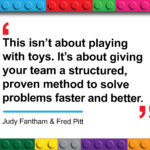Pricing Professional Services
Mastering New Business Skills for Profitability
Consulting, legal, accounting and other professional services firms have traditionally been driven by a “trifecta” of economic measures – hourly rates, billable hours and recovery ratio.
Planning involves some simple math.
Revenue = the number of billable professionals x billable hours available x hourly rate. The final factor is recovery ratio – the number of billable hours that the client is willing to pay for.
This model has been around for a long time but is coming under increasing pressure as better informed clients object to sky-high hourly rates and a meter that starts every time they make a phone call. Clients are increasingly asking for professional firms to quote fixed fees for their work resulting in a breakdown of the economics of professional firms.
But professional firms are not very well versed in fixed fee pricing. They tend to react in one or all of three ways.
1. Price in too much risk. Without the ability to “crank up” billable hours, the tendency is to price in the risk of changing scope. The result is an uncompetitive price.
2. Scale back the scope – and price – to “core” services, giving the client a price list of options that will bring the scope back to what was initially specified. This can make the base price competitive, but the client feels nickeled and dimed to death.
3. Make the price competitive and stay silent on reduced scope. Even if the client only has the budget and expectations of a Chevy solution, most professionals only know how to deliver a Cadillac which they do and which leads to writing off unrecoverable hours – the bane of professional services firms.
What can be done to correct the situation?
Professionals need to learn a set of business skills to match their technical skills.
I once heard an executive in the insurance business say, “The most important thing is to secure a new client. Even if the deal looks unprofitable at the start, something will happen quickly to change the scope. That’s when you can start to make it profitable”.
Many clients scope projects with little knowledge of what can be accomplished for the fee they have in mind. Professionals need to have an honest conversation with their client to the effect that “We can meet the price but not your scope or, we can meet the scope, but the price has to be higher.”
- It establishes the professional as the industry expert that they are.
- It allows the client to set expectations internally as to what they can get done for what cost.
- It sets the stage to go back to the client when the scope does change – and it will – and ask for more money.
Almost all professionals hate this conversation. They have established themselves as trusted advisors within their profession based on technical skills. This conversation takes them into the gritty world of commerce and could even affect their trusted advisor status.
My experience has been that clients know when they have exceeded scope. But what client is going to deliver an internal message to the effect that “We owe XYZ company more money and even though they haven’t asked for it we should pay it”?
A frank business conversation with a client is a learned skill and easy to do in a way that does not tarnish a professional reputation. And that’s the subject for my next blog.






